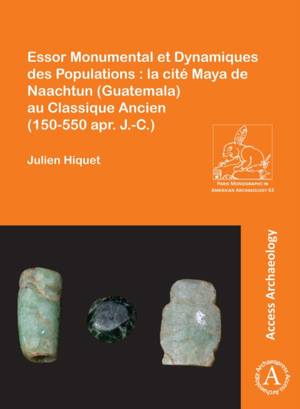
- Afhalen na 1 uur in een winkel met voorraad
- Gratis thuislevering in België vanaf € 30
- Ruim aanbod met 7 miljoen producten
- Afhalen na 1 uur in een winkel met voorraad
- Gratis thuislevering in België vanaf € 30
- Ruim aanbod met 7 miljoen producten
Zoeken
Omschrijving
The Maya city of Naachtun in Guatemala was a major political and economic capital during the Classic period (150-950 CE), known for its grand public architecture and powerful dynasty. Its architectural peak occurred in the Early Classic (150-550 CE), with the construction of large pyramids, platforms, roads, temples, and a ball court. Yet paradoxically, the region's population was much larger in the Late Classic (550-830 CE). This raises questions about how such monumental projects were achieved by a relatively small population and how architecture relates to urban demographics. This study tackles two key challenges: estimating population size despite limited residential remains, and calculating the labour cost (in person-days) of over 100 construction episodes. The findings suggest that early monumental projects required more labour than the local population could provide, implying that the city's grandeur attracted and anchored future inhabitants. Once established, the growing population could sustain further architectural development.
Specificaties
Betrokkenen
- Auteur(s):
- Uitgeverij:
Inhoud
- Aantal bladzijden:
- 624
- Taal:
- Engels
- Reeks:
Eigenschappen
- Productcode (EAN):
- 9781805830788
- Verschijningsdatum:
- 11/09/2025
- Uitvoering:
- Paperback
- Formaat:
- Trade paperback (VS)
- Afmetingen:
- 203 mm x 277 mm
- Gewicht:
- 1397 g

Alleen bij Standaard Boekhandel
+ 243 punten op je klantenkaart van Standaard Boekhandel
Beoordelingen
We publiceren alleen reviews die voldoen aan de voorwaarden voor reviews. Bekijk onze voorwaarden voor reviews.








